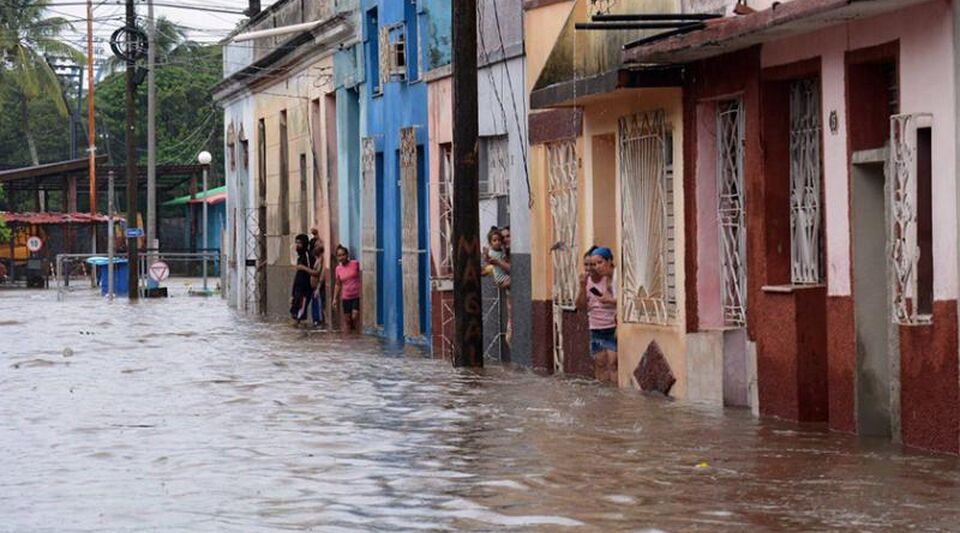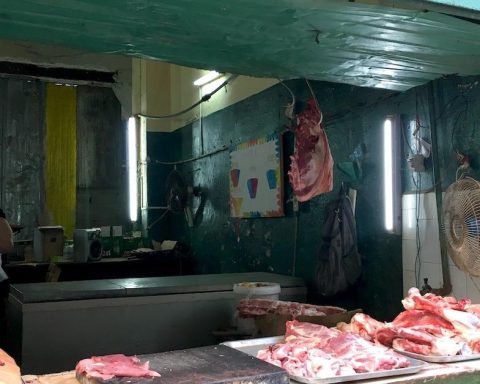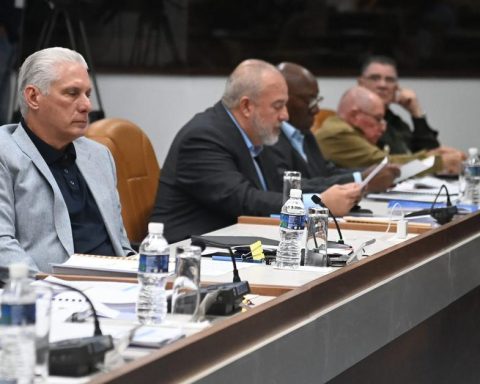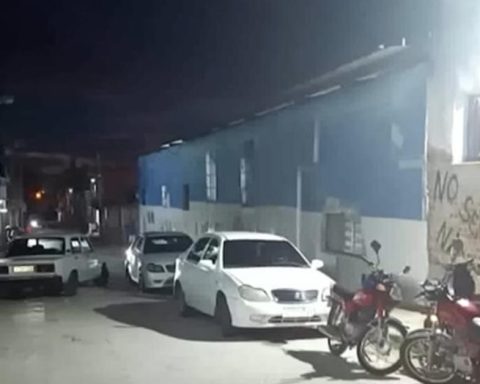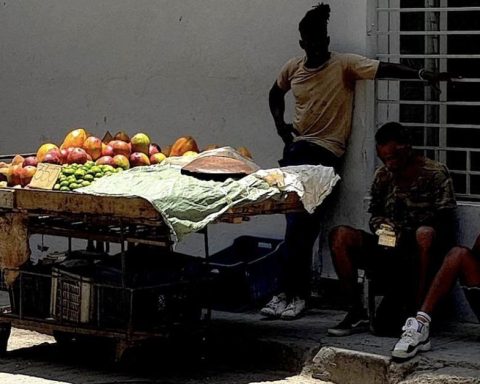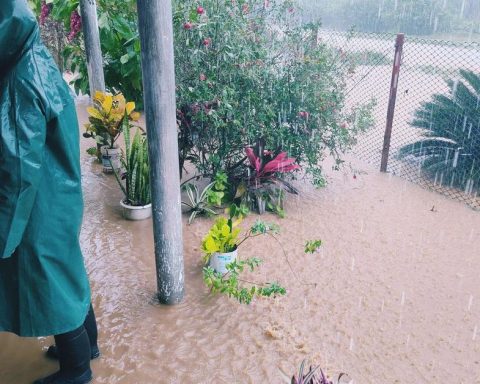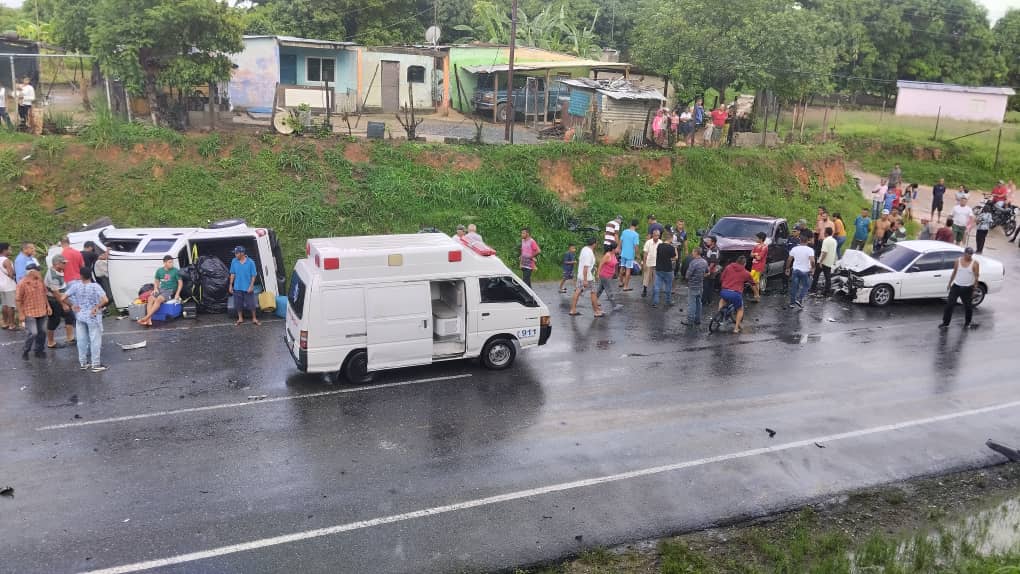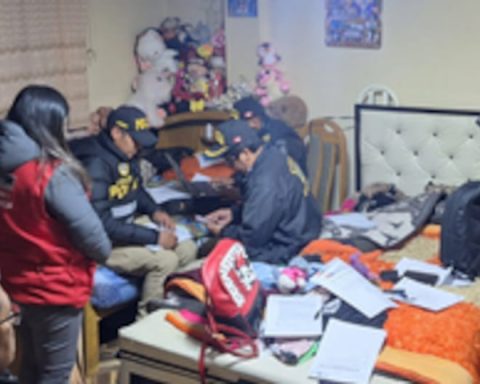The loss of six human lives and innumerable resources during the heavy rains that eastern Cuba has suffered in recent days have set off the alarms of various humanitarian organizations both inside and outside Cuba. This is the case of Cáritas, managed by the Catholic Church, whose affiliate in Cuba made a claim of help that was published, this Monday, by the media VaticanNews.
The damage from the rainfall, he affirms, “exacerbates the difficulties that the Cuban nation is already suffering”, affected by the “pre-existing economic crisis.”
The Cáritas alert is addressed to those who want to help the dioceses – ecclesiastical provinces – of Camagüey, Bayamo-Manzanillo, Holguín-Las Tunas and Santiago de Cuba, the most affected by bad weather. Calling attention to the seriousness of the situation and the precariousness in which many families find themselves, the organization explained that, especially in Bayamo-Manzanillo, the outlook was uncertain: 10,000 homes affected, crops ruined and 470 communities flooded, plus others 25 in a state of solitary confinement by land.
It is unfortunate, said Rodríguez, the scenario faced by the evacuees, who had to put their material goods under protection with great difficulty
VaticanNews interviewed several Caritas officials in Cuba, who agree with the extreme need for material aid in the eastern region of the country. “Streets like Rosario, República, Palma, Avenida de la Caridad up to the funeral home, also the main artery Cuba, Candelario and the Casino Campestre offer a worrying panorama due to the entry of water,” María Rosa Rodríguez, director of Cáritas, explained to the Vatican newspaper. in Camaguey.
It is unfortunate, said Rodríguez, the scenario faced by the evacuees, who had to put their material goods under protection with great difficulty. The damage to buildings in remote towns, such as Vertientes, Amancio and Jimaguayú, has been “innumerable” and “the oldest houses were destroyed by excess water,” he summarized, adding the groups of volunteers who have gone to those places have found “water up to and above electrical outlets.”
In Holguin, where VaticanNews interviewed the local director of Cáritas, Mariela Vázquez, the organization reported “great damage” and announced that “the risks and losses are increasing due to the overflow of rivers.” The most affected towns, she said, are Mayarí, Sagua, Gibara, San Germán and Puerto Padre.
The scene in Santiago de Cuba, from which the official Ana María Piñole reports, is not very optimistic: “Rivers and streams flood everything. In some areas the crops that were already recovering have been lost. We maintain communication with priests and teams of pastoralists located in the most damaged areas, but weather instability still does not allow further data on damages, although they express that the situation is unfortunate”.
“Rivers and streams flood everything. In some areas the crops that were already recovering have been lost”
After reacting slowly to the crisis, Miguel Díaz-Canel affirmed this Monday that the United Nations agencies that operate in Cuba, in addition to their ally Venezuela, have offered their help. The official press delayed the coverage of the rains, which did not occupy the front page of the newspapers until several days after the effects began. The information that the state media have privileged alludes to the “benefit” of the rainfall: having filled the country’s dams and reservoirs.
Some newspapers have echoed Díaz-Canel’s request, such as Havana Tribune, which announced, starting this Monday, a “collection of donations in the municipal governments of each territory”. “Spaces will be set up in the headquarters of the 15 municipal Assemblies of People’s Power in the province for the collection of donations,” the newspaper reported.
On June 7, the Cuban Institute of Meteorology issued a special notice to explain that the cause of the heavy downpours was the combination of a trough in the middle and upper levels of the troposphere, over the Gulf of Mexico.
However, the Civil Defense did not decree its traditional informative, alert and alarm phases to warn citizens and institutions to take preventive measures.
________________________
Collaborate with our work:
The team of 14ymedio He is committed to doing serious journalism that reflects the reality of deep Cuba. Thank you for accompanying us on this long road. We invite you to continue supporting us, but this time becoming a member of our newspaper. Together we can continue transforming journalism in Cuba.
